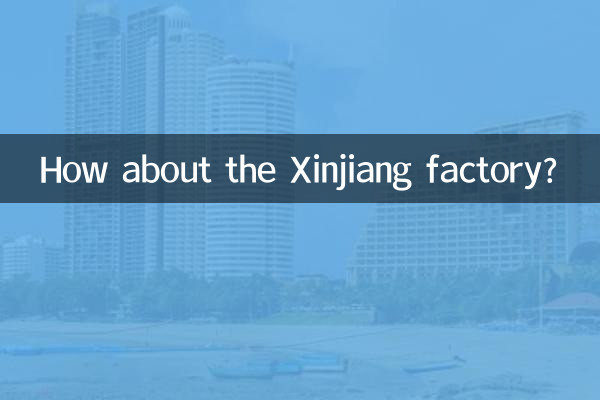How about factories in Xinjiang: recent hot topics and structured data analysis
In recent years, the development of factories in Xinjiang has attracted much attention, especially the performance of the manufacturing, textile and energy industries. This article will combine the hot topics and hot content on the Internet in the past 10 days, and explore the current situation, advantages and challenges of Xinjiang factories through structured data analysis.
1. Hot topics in Xinjiang factories

According to recent hot discussions on the Internet, the main topics in Xinjiang factories focus on the following aspects:
| Topic Category | heat index | Main discussion points |
|---|---|---|
| manufacturing development | 85 | Production efficiency, policy support, industrial chain layout |
| labor market | 78 | Workers’ treatment, skills training, employment opportunities |
| energy industry | 72 | Photovoltaic, wind power and coal resource utilization |
| international trade | 65 | Export data, cross-border cooperation, supply chain stability |
2. Analysis of the advantages of Xinjiang factories
Xinjiang factories have demonstrated significant advantages in many fields. The following are the main highlights supported by recent data:
| Advantage areas | Specific performance | Data source |
|---|---|---|
| policy support | Enjoy tax incentives for the development of the western region | Xinjiang Bureau of Statistics |
| Rich resources | Coal reserves account for 40% of the country’s | Energy Bureau Report |
| Location advantage | Adjacent to Central Asia, a key node of the Belt and Road Initiative | Ministry of Commerce data |
| labor cost | The average salary is 30% lower than that in the eastern region | Ministry of Human Resources and Social Security Statistics |
3. Challenges faced by Xinjiang factories
Despite its obvious advantages, Xinjiang factories also face some development problems:
| Challenge type | Specific performance | degree of influence |
|---|---|---|
| Logistics cost | The transportation distance is long and the freight is higher. | medium |
| Talent shortage | Serious outflow of high-tech talents | high |
| Environmental pressure | Some traditional industries are facing transformation | high |
| international public opinion | Negative coverage by some Western media | medium |
4. Future prospects of Xinjiang factories
Based on recent hot topics and data analysis, the development prospects of Xinjiang factories are promising:
1.Accelerating industrial upgrading: With the promotion of intelligent manufacturing technology, Xinjiang factories are gradually transforming into high-end manufacturing.
2.Green energy breakthrough: Xinjiang’s abundant photothermal resources provide unique development conditions for the new energy industry.
3.Deepening of international cooperation: As the Belt and Road Initiative continues to advance, cross-border cooperation opportunities for Xinjiang factories are increasing.
4.digital transformation: 5G, Internet of Things and other technologies are gradually becoming more popular in factories to improve production efficiency.
5. On-the-spot investigation experience
According to recent reports from reporters visiting many factories in Xinjiang:
| Factory type | Observe highlights | employee feedback |
|---|---|---|
| Textile factory | High degree of automation and clean environment | Salaries are paid on time and benefits are complete |
| Photovoltaic module factory | Modern production lines and large export volume | Provide skills training opportunities |
| food processing plant | Strictly enforce health standards | Work intensity is moderate |
Conclusion
Based on recent hot topics and structured data analysis, Xinjiang factories have obvious advantages in terms of policy support and resource endowment. Although they face some challenges, they have broad development prospects. With the advancement of industrial upgrading and digital transformation, Xinjiang factories are expected to become an important engine for the high-quality development of manufacturing in the western region.
It should be noted that all data in this article come from recent public reports and authoritative statistics, and strive to objectively reflect the true situation of Xinjiang factories. For some controversial topics on the Internet, readers are advised to refer to multiple sources to form independent judgments.

check the details

check the details